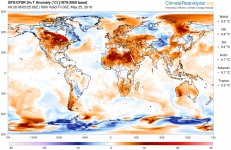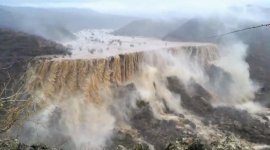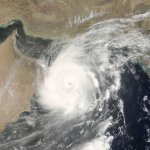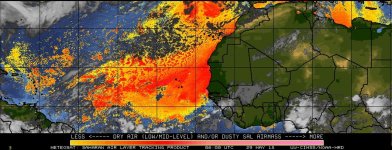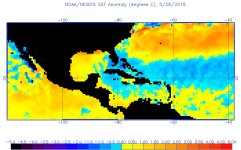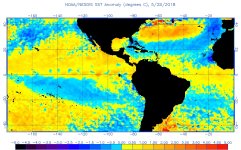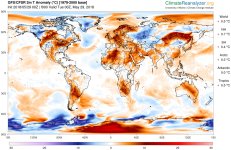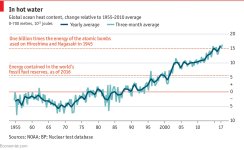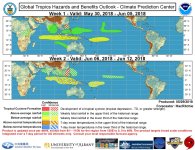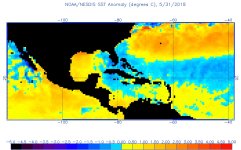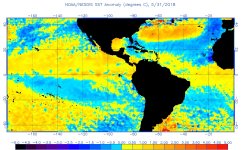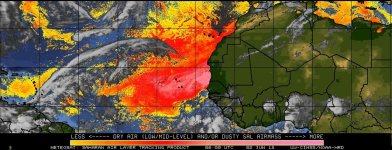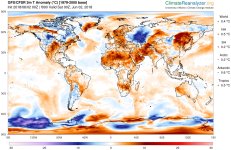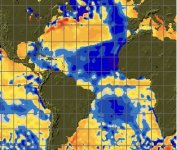A perfect example/proof of the new trend
Cyclone Mekunu was nearing landfall on the coast of southern Oman near or just west of the city of Salalah (metro population 320,000). Mekunu’s top 1-minute sustained winds had increased to 100 knots (115 mph) at 12Z, making it the equivalent of a Category 3 hurricane. If Mekunu comes ashore at that strength, or even at Category 2 strength, it will be the most powerful cyclone at landfall for this part of the Arabian Peninsula in at least the past 60 years.
Satellite loops show that Mekunu carried out an impressive burst of intensification as it neared the Oman coastline
As it seems some people don't fully understand the link between ocean warnings and rapid intensification,this is what it is about ..Check data about "hurricane Maria" to get an idea.
The same phenomena at play with Irma is also true with Mekunu :Waves estimated by JTWC as high as 32 feet will be slamming into the coast atop a significant storm surge
This is why the collectivity is going to build a 13 millions euros shelter on high grounds.
Cyclone Mekunu was nearing landfall on the coast of southern Oman near or just west of the city of Salalah (metro population 320,000). Mekunu’s top 1-minute sustained winds had increased to 100 knots (115 mph) at 12Z, making it the equivalent of a Category 3 hurricane. If Mekunu comes ashore at that strength, or even at Category 2 strength, it will be the most powerful cyclone at landfall for this part of the Arabian Peninsula in at least the past 60 years.
Satellite loops show that Mekunu carried out an impressive burst of intensification as it neared the Oman coastline
As it seems some people don't fully understand the link between ocean warnings and rapid intensification,this is what it is about ..Check data about "hurricane Maria" to get an idea.
The same phenomena at play with Irma is also true with Mekunu :Waves estimated by JTWC as high as 32 feet will be slamming into the coast atop a significant storm surge
This is why the collectivity is going to build a 13 millions euros shelter on high grounds.


